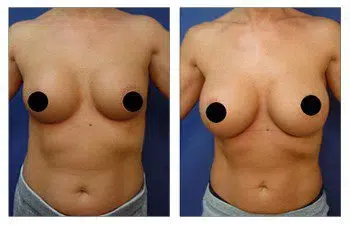
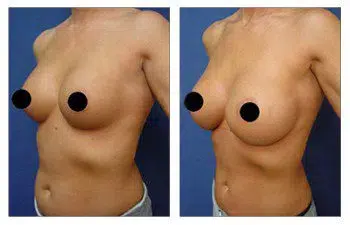
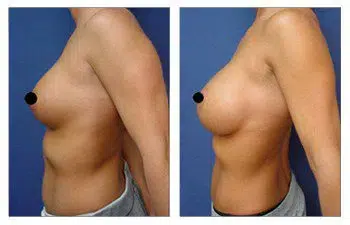
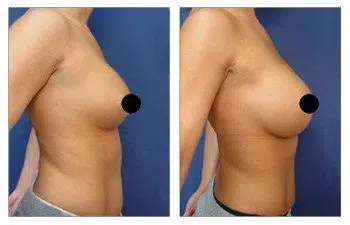
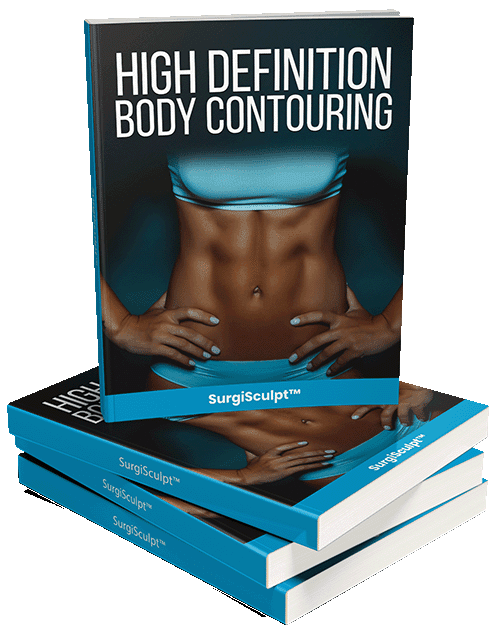
Introduction: Breast Augmentation Revision to go Bigger
You got breast implants, but now you want to go bigger? At SurgiSculpt, we see many patients who want to go bigger despite having undergone a breast augmentation. After recovering from a recent breast augmentation, many patients decide that they would like a breast augmentation revision to go bigger.
Breast augmentation revision to go to a larger cup size is a surgery that we perform routinely at SurgiSculpt. If you want to go bigger, then you are looking at a breast implant revision surgery. There are a few questions you should be asking your surgeon before you commit to another breast augmentation surgery. The first question is if you have waited enough time between your recent breast augmentation and the desired breast augmentation revision to go bigger.
Your primary breast revision can take 6 months up to a year to recover and heal fully. Although you may feel ready to revisit the operating theater, do not be in too much of a rush. You want to wait that 6 months to a year so your breast pocket stretches out and you will be able to fit a larger implant.
The second question is how much bigger can you go realistically? The increase in the breast implant size is dependent on a few points. To begin, it is necessary to note that your implant needs to be centralized on your nipple.
Simply put, the size of your new, bigger implant is dependent on the nipple to crease distance. Your nipple-to-inframammary crease distance dictates how big your ideal implant can be. This distance must equal the radius of your implant chosen. The good news is that the 6 month-1 year waiting period will allow that distance to increase so there is a new size that your breast capsule can carry.
What also happens is that your breasts lateralize and push out over time. Your original breast augmentation likely stretched out your inferior breast pole and thus that nipple to crease distance, which will help accommodate a bigger implant.
We use the capsule that is already formed and manipulate it to accommodate the new, larger implant. You can have a capsulotomy- to accommodate a bigger implant for lateralization that happens when breasts, stretch the upper area of the breast.
You may also require a capsulectomy– to significantly increase the size of your capsule, or if needed to open up the capsule medially. When lateralization is severe or if the capsule needs to be sewn down, a capsulorrhaphy is performed.
In rare cases, we see Symmastia, which is when the breast pockets are too close together, pushing together, and we need to separate the two breast pockets.
As we mentioned above, based on the distance, inframammary crease to nipple areolar, the implant radius relies on this. The inframammary crease can stretch out, stretching out the distance to the nipple-areolar, and then it is appropriate for you to come back and upsize. You want to see how much longer that distance is to see how much bigger they can go.
Part of that process also includes manipulation based on the scar tissue capsule that has already formed. You want to use the already-formed capsule and manipulate it as needed. Many breast implants lateralize, if minimal-moderate, a bigger implant will fit better but you need to incise the medial area. If moderate-severe, you may need to open up the medial capsule. We as surgeons need to gauge how big your new implant is and make sure it fits that distance.
Your new implant needs a larger volume to fit it. The upper radius is also accommodated as necessary for the breast implant to fit. Sometimes, if the nipples are low, you must get a breast aug with something that is smaller to moderate size, so the breast implant is centered.
This is because the breast implant needs to sit on an inframammary crease and the center of the breast implant needs to center on the nipple-areolar. Basically, we modify the original capsule to accommodate the new implant. If it is not centralized, the implant can move around.
The second surgery entails a bigger increase than the present distance of your nipple to the crease cannot accommodate. If you are wanting a bigger implant than your distance can accommodate, then you need a simultaneous breast lift with breast implant augmentation revision.
A breast lift relies on that crease to nipple-areolar distance. Remember, a breast lift is performed to both remove sagging breast tissue and to lift the nipple so that the new nipple-to-crease distance will be greater and match the radius of the new implant.
How much we lift you is defined by the new implant and its new radius. We perform a vertical mastopexy that will eliminate sagging of the breast mound and elevate the nipple to accommodate the new implant size So if you are ready to have a breast augmentation revision to go bigger, then know that your surgeon will want you to recover over that 6 months to a year period, so your surgeon can manipulate your formed capsule and possibly do a lift if you desire a larger breast implant then your capsule can accommodate.
Please see our 35-year-old patient who waited 1 year for her breast augmentation revision to go bigger.
Understanding Your Desire for a Fuller Bust
Defining Your Aesthetic Goals
- Before embarking on your breast augmentation journey, take time to clarify your aesthetic goals.
- Reflect on the desired breast size, shape, and overall appearance you envision.
Cultural and Social Influences
- Societal standards of beauty and personal preferences play a role in the decision to pursue breast augmentation.
- Recognize the importance of your own desires and motivations in this journey.
Breast Augmentation Options
Implant Types: Silicone vs. Saline
- Silicone implants offer a more natural look and feel compared to saline implants.
- Explore the advantages and disadvantages of each implant type.
Implant Shapes: Round vs. Teardrop
- Understand the differences between round and teardrop-shaped implants and how they can affect your desired look.
Implant Size and Profile
- Determining the right implant size and profile is crucial for achieving your desired fullness.
- Work closely with your surgeon to choose the dimensions that align with your aesthetic goals.
Consultation and Planning
Selecting a Skilled Surgeon
- Choose a board-certified plastic surgeon with extensive experience in breast augmentation.
- Research their credentials, view before-and-after photos, and read patient testimonials.
Initial Consultation
- During your consultation, openly discuss your goals and expectations with your surgeon.
- They will conduct a physical examination and help you make informed decisions.
The Surgical Procedure
Anesthesia and Incision
- Breast augmentation is typically performed under general anesthesia.
- Discuss incision options with your surgeon, such as periareolar, inframammary, or transaxillary incisions.
Implant Placement
- Decide between subglandular and submuscular implant placement, considering your body type and desired outcome.
Recovery and Healing
mmediate Post-Op
- Expect some swelling, bruising, and discomfort following surgery.
- You will be given specific post-operative instructions to facilitate your recovery.
Supportive Garments
- Wearing a supportive bra or compression garment can aid in reducing swelling and providing comfort during the healing process.
Returning to Normal Activities
- Recovery times vary, but most patients can return to work and light activities within a week.
- Strenuous exercise and heavy lifting should be avoided for several weeks.
Long-Term Results and Care
Scarring and Scar Care
- Incisions will leave scars, but they typically fade over time.
- Your surgeon can recommend scar care products and techniques to minimize their appearance.
Maintaining Results
- Maintaining a stable weight and leading a healthy lifestyle can help preserve your breast augmentation results.
- Regular follow-up appointments with your surgeon are essential for long-term monitoring.
Potential Complications and Considerations
Complications to Be Aware Of
- While breast augmentation is generally safe, there are potential risks and complications.
- Understanding these risks and discussing them with your surgeon is crucial.
Financial Considerations
- The cost of breast augmentation can vary based on factors like location, surgeon’s expertise, and implant choice.
- Explore financing options and discuss costs with your surgeon’s office.
Emotional and Psychological Impact
- Understand that your feelings about your new breasts may evolve over time.
- It’s essential to have a supportive network and consider the emotional aspects of the journey.
Conclusion: Breast augmentation to go Bigger
Breast augmentation to achieve a fuller bust is a deeply personal journey that can boost confidence and enhance your self-esteem. By thoroughly researching your options, selecting a skilled surgeon, and setting realistic expectations, you can embark on this journey with confidence. Remember that the key to a successful outcome is open communication with your surgeon, careful planning,
and a focus on your own desires and motivations. Whether you choose silicone or saline implants, round or teardrop shapes, and sizes and profiles that align with your aesthetic goals, breast augmentation can help you achieve the fuller, more confident appearance you desire.
